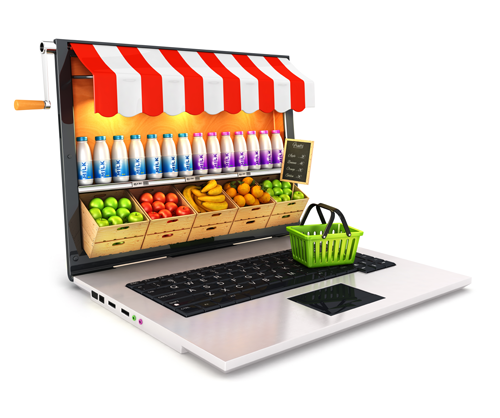Getting in on the Retail Subscription Game

Retail subscriptions are popping up everywhere - and it's estimated that there are more than 600 monthly subscription services, offered in the U.S, and in 2013, investors poured $300 million into this category.
The growing category now includes subscriptions and continuity programs for a wide range of products, such as books, pet food, diapers and razor blades, and subscription services in the apparel industry category are also taking off.
Retail subscriptions offer customers the ultimate in convenience, frictionless transactions and in many cases, carefully curated goods personalized to consumers' needs and preferences. The rise in these subscription services is creating a culture of convenience that's transforming retail.
Benefits to Retailers
Much of what retailers love about the subscription model is recurring revenue. Additionally, statistically speaking, subscription businesses support a higher average take rate and also average a greater sale per order than traditional one-time purchases. As well, the model has an inherent ability to promote and protect product/brand loyalty, which helps keep customers captive with firm footing on the path to repurchase. Subscriptions support greater sell-through and a frictionless buying experience enabling a consumer to quickly and effortlessly complete sales transactions. With this improved cadence of purchase and repeat business, marketers and retailers gain valuable insights to better understand customer preferences to cater to unique and changing needs.
Offering subscription services also helps retailers better manage their business via more predictable demand and economies of scale, evening out the demand curve and buy cycle. Since subscribers automatically "buy" each month, retailers often incur less marketing and lower retention costs. The caveat here, though is whereas transaction-by-transaction retailers can cross-sell, up-sell, and increase the frequency with which customers buy, it's sometimes harder for subscription businesses to expand the value of each customer, who quickly becomes conditioned to getting their monthly subscription for a relatively low cost.
Elements to Consider
There are many key considerations when it comes to planning for a successful continuity program.
Inventory Availability and Product Quality. It probably doesn't need to be stated that sourcing is key; an out-of-stock item for a traditional transaction-by-transaction retailer can impact a few orders, but it can impact a full month's subscription business. Make sure you're choosing suppliers wisely - ones that have the financial and operational means to keep your business stocked with inventory.
Product quality is also imperative. And in some cases, quality must be better than what's provided in a traditional buying scenario. For example, a customer might buy some bananas with a few brown spots in the store, but if they subscribe to a fresh produce delivery service, the expectation is bright beautiful yellow bananas, every time.

Curation - offering unique (curated clothing) or superior quality (super sharp razor blades) items that consumers would not otherwise be able to find or aren't aware of is a vital element of a continuity program. In this way, retailers are able to provide yet another value-add to them - that of a personal shopper offering a more personalized experience and invoking a feeling of wonder or surprise is a winning retail model to keep customers engaged and orders flowing.
Order Management and Fulfillment. The foundation of any successful retail subscription business is consistency, repeatability and execution in the areas of order management, ongoing program maintenance, and customer preferences. Retail systems must enable reliable handling of orders and fulfillment during peak order times.
Weak fulfillment is a critical vulnerability that will lead to customer dissatisfaction and potential customer loss. Customer delight is a key element and retailers must be able to fulfill shoppers' desires for instant (or at least automated) gratification.
Moving from one-off transactions to a subscription model means moving from a selling relationship to a service relationship - and similar to the way consumers view their cable or wireless service, expectations are extremely high that the service be "always on." Miss a delivery and a retailer will have many unhappy customers on their hands - and those customer frustrations are likely to play out on social media.

On the plus side, subscription retailing eliminates fulfillment spikes and irregularities that have traditionally plagued retailers, since there is a fixed regular shipping window and typically the same product size month to month. Also, retailers can manage around the typical peak order and fulfillment scramble around known dates such as Black Friday or Valentine's Day, etc.
Customer Responsiveness. Agility in retail business systems is also needed to support customer responsiveness and manage preferences and exceptions. That customer heading to Hawaii for two weeks will want to "hold" their fruit-of-the-month club delivery, lest they arrive home to a pile of mush rather than musk melon.
Last but not least, it's important to have a customer friendly return policy that is both liberal and easy, as well as a willingness and flexibility to accept returns for a variety of reasons. And it's also important to devise a strategy around liquidation of returned merchandise, which is sometimes tricky.
Ready, Set, Go, Repeat!
If you are selling online, you probably already have many of the elements in place to support a continuity program. However, you'll want to think about how to scale your business and without the right business systems in place, this can be difficult. Retail subscriptions offer something in very high demand - who among us wouldn't like to liberate an extra 30 minutes a month or a week? But it's important to ensure the retail operations behind your subscription business can meet all the various customer demands being made manifest - and even more pronounced - in this culture of convenience.
Sean Cook is vice president of digital commerce at Aptos, a recognized market leader in retail solutions including Digital Commerce and Point of Sale, with over 122,000 stores live on its platform.







